Local Travel: When Government Mistakes Become Tourist Attractions.
Coarse brush and scraggly trees cleave deep roots into shallow soil and hunks of stone, breaking apart with slow determination the very lifeblood they need to survive. The lawn is maintained, for all intents and purposes, where no lawn should grow, and strangely verdant vines drape over the walls of the fortification, attempting to either touch its toes or swallow it whole.
These plants are nature’s displaced refugees, deposited in this hostile foreign environment against their will. And yet despite finding themselves living atop a man-made pile of rubble at the place where the wide mouth of the James River is stirred and swallowed by the Chesapeake Bay, Nature, it turns out, needn’t long to adjust.
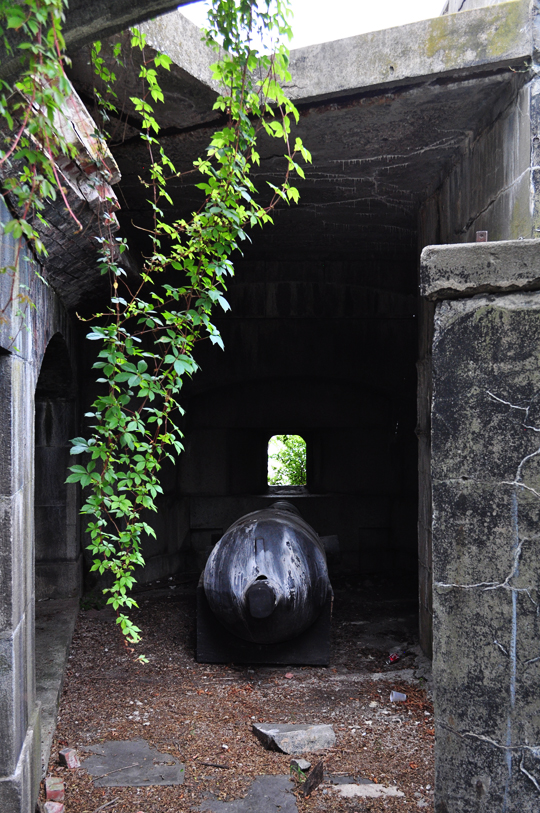
Fort Wool (formerly Fort Calhoun) is a single tier fortification that was intended to protect the Hampton Roads Harbor from invasion in the early 1800’s. With visions of grandeur, the government sanctioned the dumping of tons of stone into the center of the waterway where ships had been dumping rip-rap for years, with the intention of building an island on which to construct the fort. After years of piling stone and debris into the river, they’d achieved a height of six feet above water level at high tide — surely high enough to safely start building their colossal, four tiered structure with over 200 cannons, right? Except they may have forgotten to factor in how much four tiers of stone and iron weighs. That, combined with the fluidity of their environment, and the island began rapidly sinking at a rate of eight inches per year. Oops. So they continued to add stone for another 25-or-so years to refortify their fortified island, but eventually realized it was only strong enough to hold such a massive fort, and they abandoned construction.
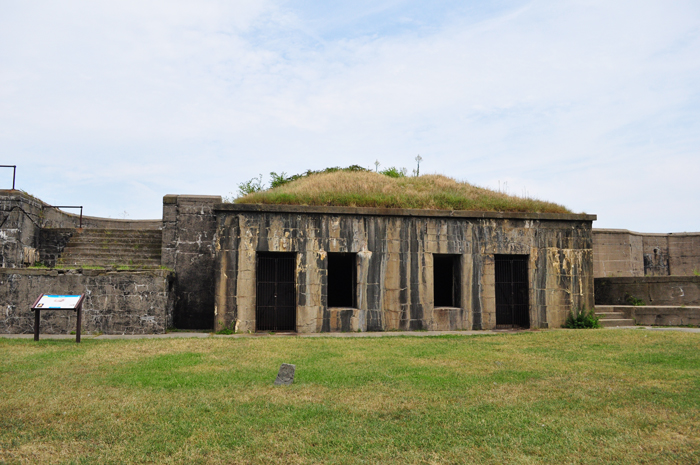
As far as colossal government project failures go, this one was a doozie.
And the thing of it is, I’d driven almost directly beneath this little embarrassment dozens of times without ever realizing it was there. See, I live near Hampton, Virginia, which is on one side of the James River, and we have several friends in Norfolk and Virginia Beach, which is on the other side of the James River. The Hampton Roads Bridge Tunnel actually descends beneath the surface of the water very near Fort Wool, only I never had any clue this neat historic relic even existed — let alone that you could visit it.
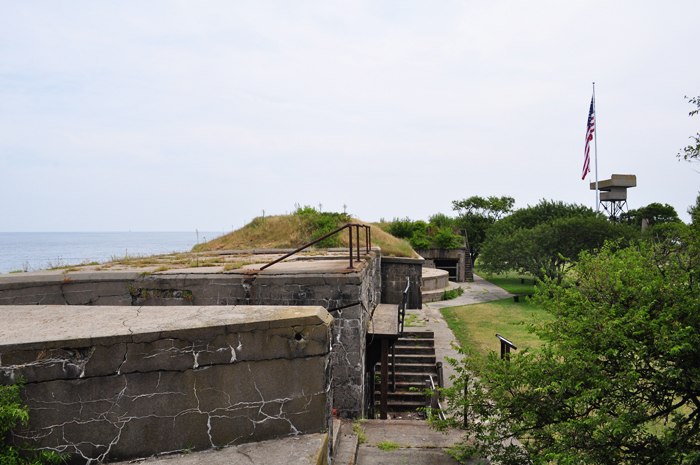
If you don’t have your own boat, you can go via the Miss Hampton II, a sturdy little seafaring vessel that departs from the Hampton Harbor with a full snack bar service and a lively tour guide.
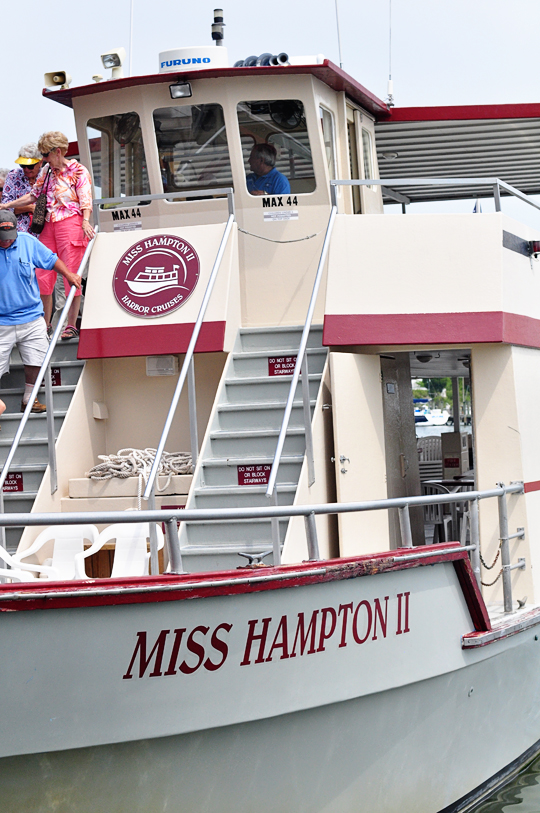
It’s even better than taking your own boat, because the guides are incredibly knowledgable about all of the tour sites, including Norfolk Naval Base, Hampton University, Blackbeard’s Point, Fort Monroe, the location of the Battle of the Ironclads, and of course, Fort Wool.
Before circling around to the fort, we passed the lovely harbor, Hampton University, and the Norfolk Naval Base.
As we left the sunny harbor behind, an eerie haze began to roll across the waterway, indicative of its foggy past. A friend of ours, who’s a Captain in the Navy, took Justin and I on a tour of the USS Roosevelt earlier this summer, but it was equally enthralling to take in these beauties from the sea — their sheer mass is simply incomprehensible.
Eventually we came around to a portion of the water on which the famous Battle of the Ironclads took place between Union and Confederate ships during the Civil War. Even though Virginia was part of the Confederacy, nearby Fort Monroe (and sad little Fort Wool, with its few piddly cannons facing the wrong direction for a war on our own soil), were Union forts, and the Union had a blockade of three wooden ships blocking waterway access to the Confederate cities of Richmond and Norfolk. So the Confederates sent in this hulking iron ship, the CSS Virginia (formerly the USS Merrimack), which rapidly sank two of the three Union ships and ran the third aground. When the Virginia went to continue its attack on the grounded ship, the Union’s ironclad ship, the smaller USS Monitor, came to the rescue. The two ironclads were equally matched, and in a kind of hilarious (as far as battles go) misunderstanding, each side thought the other was calling it quits when the Virginia turned around for repairs and the Monitor turned around for gun support from Fort Monroe, and each declared victory. In reality, though, neither side really “won” the battle.
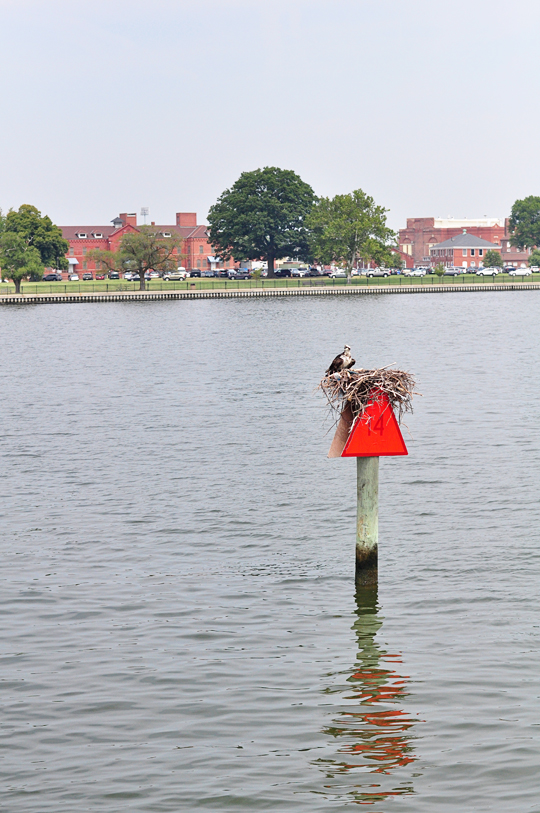
I’ll admit it — I’m not a huge history buff. While it’s always great to learn from our past mistakes, I’ve always been more interested in the present than analyzing and rehashing past events. But there was something really cool about hearing the story on the very water where it took place — and now I know why the nearby Monitor Merrimack bridge tunnel has its name!
After that animated tale, we approached Fort Wool through the haze.
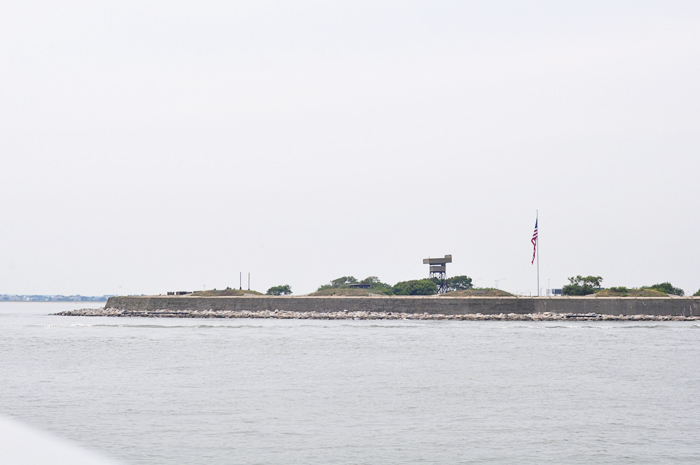
Originally part of a whole slew of new fortifications inspired by an attack of the British during the War of 1812, For Wool was like the Little Engine that Could–not.
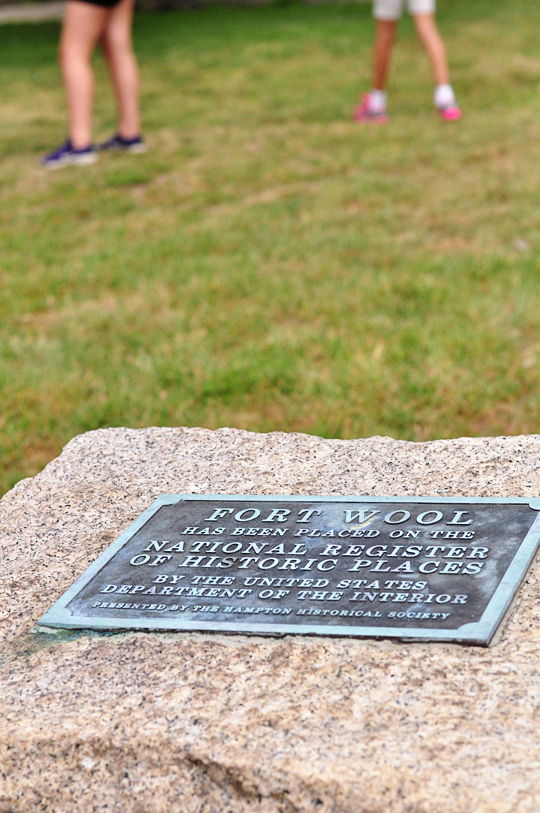
Now on the National Register of Historic Places, it never successfully really functioned as a useful fort. Though it did serve as a respite for three U.S. presidents, temporary career booster for Robert E. Lee (before he chose the wrong side in the war), and even served as a prison for a time.
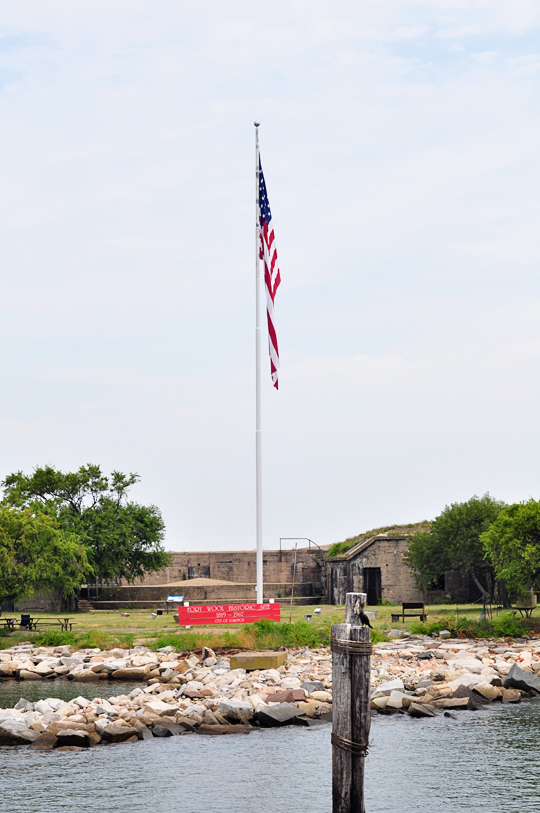
In fact, the derelict structure with its rusted iron and relative lack of foresight reminded me of our visit to Alcatraz. While the idea of sustaining life on a tiny island is fun to think about, the reality of supplying food, shelter, and especially fresh water is a complex and expensive operation made that much more complicated when the island itself is man-made.
And also sinking.
The more I explore this region of Coastal Virginia, the more I like it here. Though it’s unclear whether we’ll stay put for the rest of Justin’s military career or have one more shot at moving overseas, I intend to discover as much of this area as I can before we move on. And Hampton, it turns out, is a fantastic place to start.
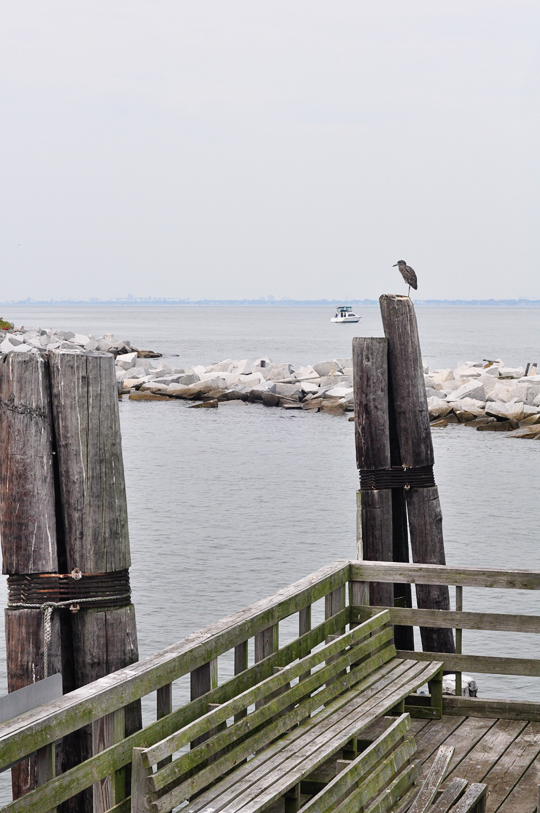
Need to Know:
Miss Hampton II Harbor Cruises
710 Settlers Landing Road
Hampton, VA 23669
888-757-BOAT
Good to Know:
- Exploring Fort Wool is only part of the tour if weather permits.
- Bring a light jacket — even if it’s nice out. The temperature can be chillier on the water.
- If you get motion sick, be sure to take the necessary precautions. The Navy cruisers passing by rocked the Miss Hampton on more than one occasion!
Disclosure: My tour on the Miss Hampton II was a complimentary part of a press trip I attended through the Hampton Convention & Visitor Bureau. All opinions, of course, are my own.
























Comments
We lived on Norfolk Naval Base and had no idea Fort Wool existed! Thanks for the fun history lesson. Makes me sad we did not slow down enough to better explore that historic part of Virginia. Glad you are there to do it for us :-)
Aw, thanks Roxanne! You know you’re welcome to come visit any time. ;)
I love your description and the way you captured this odd little site so perfectly! It was fun to share the experience with you.
It was fun sharing with you as well! And thank you so much for inviting me, Tamara! I had a blast. :)
Cool. I bet I would like this given I also loved visiting Alcatraz. One of the highlights of my trip to SF.
I’m no history buff either, but I find I always enjoy these elements of travel, particularly when the stories come from charming, knowledgeable locals. My mum and I went on a city tour in Boston, and the guys who drove and toured us were great, plus we Canadians ate up the accents!
The enthusiasm/knowledge of the guides can totally make or break the tour — your absolutely right! And you definitely don’t have to be Canadian to love those Boston accents. ;)
Great post! Love your style of writing xx